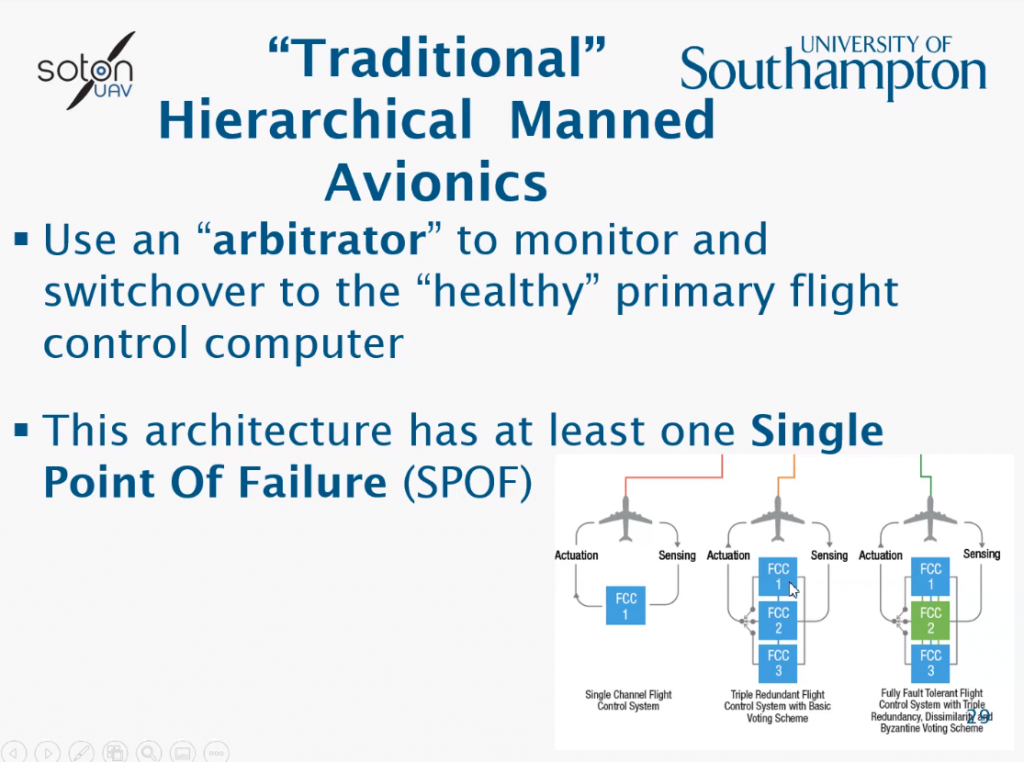On October 14th, 2020, Professor Jim Scanlan of the Computational Engineering and Design Unit at the University of Southampton gave a talk on Southampton’s pioneering work in Unmanned Air System (UAS) technology.

Prof. Scanlan’s presentation considered three main topics: upcoming UAS technologies, previous projects on transporting medical supplies, and the upcoming projects in the department.
Prof. Scanlan began by introducing his belief that the Aerospace sector is currently at a ‘tipping point’, and is moving into a new range of technologies. One of these regions is the use of UASs, building on the recent rise in the use of small, consumer-grade drones in the media and leisure sectors. The next ‘big step’, he believes, is the use of UASs beyond visual line-of-sight, and progressively introducing UASs into increasingly more complex and busy airspace. However, there are significant barriers to this: it isn’t currently possible to guarantee communications throughout the flight for both telemetry and control purposes, and preventing collisions, particularly for recreational general aviation users, is difficult.
These barriers inform the group’s long-term research goals, which seek to enable high levels of autonomy. Prof. Scanlan hopes that his work will prevent the need for constant communications between the UAS and a ground system, as well as full awareness of the environment (such as poor weather) to enable it to react to unplanned events. Eventually, Prof. Scanlan hopes to remove the reliance of the technology on human ‘minders’, who currently need to oversee the operations of the UAS.
The presentation then turned to a project performed by Southampton’s UAS research group in March, where its ULTRA UAS platform, owned by Windracers, ferried medical supplies between Lee-on-Solent airfield in Fareham, and the Isle of Wight under Operation Vectis. This project built on significant past research in the use of UAS for medicine transportation, which aims to replace land-based deliveries with point-to-point drone systems. Four possible routes are currently being investigated (Figure 1.)

In this trial, ground control stations were established at Lee-on-Solent airfield, and Binstead airstrip (Route C). Initial trials with a smaller UAS, but with the same avionics equipment as the ULTRA platform, allowed an initial, lower-risk before moving on to full flights with the ULTRA UAS platform.
The final topic of Prof. Scanlan’s talk was a discussion around the use of ‘Intelligent’ avionics. Since aerospace systems are not able to ‘pause’ in the event of a malfunction, high levels of trust and redundancies are required to prevent on-board malfunctions. Traditional ‘hierarchical’ avionics uses an arbitrator computer to continually monitor the activity of two, independent flight computers (Fig. 2). However, this introduces a single-point-of-failure (SPOF) in the arbitrator.

This is an example of a ‘Byzantine Generals Problem’ which states that, in order to avoid catastrophic failure, the system’s actors must agree on a concerted strategy. However, some of these actors are unreliable. In order to get around this, it was found that a minimum of (3n+1) actors was required to prevent overall systems failure in hierarchical control, where n is the number of unreliable actors. Prof. Scanlan’s group has come up with an alternative architecture, known as a masterless flight control system, which has zero SPOFs. This research has spawned a spin-out company, Distributed Avionics, which markets this masterless flight control system for general use.
Prof. Scanlan rounded out the talk by including some advice from his career – always learn from your mistakes, and always expect the unexpected. The latter was exemplified when an early prototype UAS had an unfortunate encounter with a Raptor!
Written by Jack Tyler
